Sign on the Window isn't the Bob Dylan podcast you need, but it's definitely the one that you want! Each week we select a Dylan song at random, live with the song for a week (or two) and then get together to discuss. This week we delve into "Shelter from the Storm" off 1975's classic, Blood on the Tracks.
In the episode, we talk context (3:30), the various versions we listened to and the density of the lyrics (7:30), and Dylan's relationship with women and utopia (33:30).
Next week: We're going to 1985.
CONTEXT (3:30)
This song was recorded in A&R Studios, New York City on September 17, 1974 in five takes. (TBLS Vol. 14: More Blood, More Tracks hadn’t come out yet but now you can listen to these and more.)
“Shelter” has been performed 376 times from April 18, 1976 to July 16, 2015 (so it’s possible this number could change) and is featured on the live albums Hard Rain and At Budokan.
It’s been used in popular media as well: from blockbusters like Jerry McGuire and Steve Jobs to smaller films like Warm Bodies and St. Vincent; also TV shows like Alias, Criminal Minds, Numb3rs, and National Geographic’s Mars.
SONG ITSELF (7:30)
We listened to multiple versions of the song: Blood on the Tracks, a take from the New York sessions, Hard Rain and At Budokan.
Musically, there’s a lot going on. Tony Brown’s roaming bass line is one of the best parts of Blood on the Tracks. It’s got harmonica and a refrain that is almost a chorus (both to Kelly’s joy). It sounds effortless, almost like Dylan is flexing at a new height of his command control.
A take from the New York session for “Shelter” (at the time, before More Blood, More Tracks, on the Jerry McGuire movie soundtrack) didn’t have Tony Brown’s bass and you could hear the clicking of Dylan’s cufflink against the body of the guitar. This gave it a demo vibe and wondered why more artists didn’t incorporate that into their released music (like “Shallow Grave” by Tallest Man on Earth). It also featured an extra sixth verse, later cut.
Hard Rain and Budokan are… rough. The Hard Rain cut is from the second leg of the Rolling Thunder Revue on May 23, 1976 at Hughes Stadium in Fort Collins, CO. It was broadcast on NBC as a part of a hour-long special. While that second leg isn’t as celebrated as the winter 1975 leg, it did feature Scarlet Rivera on violin, T-Bone Burnett and Dave Mansfield on guitar, Rob Stoner on bass and Howard Wyeth and Gary Burke on drums. Budokan had none of this. What a boring mess that the fascinating World Tour of 1978 produced, only two years removed from the energy burst forth in Rolling Thunder. The best you can say is it’s full of weird choice after weird choice.
WOMEN AND UTOPIA (33:30)
So what’s happening in this song? Daniel and Kelly jump into narrative and talk about the lyrics. Inevitably, it leads us to Sara. Clinton Heylin sees “Shelter from the Storm” as part 2 of “Wedding Song.” Carl Porter invokes Dylan’s “tragic sense of life” now that “a love that once gave him sustenance has withdrawn from his life that he now finds himself drifting through the ruins of an empty world.” That brings us to women, in general.
The women he praises are almost all ones who have given him shelter from the storm, who are there to allow him to go someplace that is innocent and in which he can escape from the harsh realities of a competitive social world that contains deceit and injustice. But they can do that only by completely removing themselves from the modern world. The way Dylan describes them, the most active thing they do is grow their hair. — Carl Porter
Yikes. Now, on some level, I’m here for Dylan’s critiques of society. This podcast is called Sign on the Window for a reason. Wanting to escape society and go into your own bubble, to find safety and comfort, is human, is universal. But to conflate these emotions and intuitions together produces some cringey shit– this song certainly less so than the manipulative “Sara” and vapid “Wedding Song.” When Dylan is so astute elsewhere it relieves pressure cookers like this but it doesn’t mean we can’t talk about it.
And aren’t the complications what makes his art so compelling? And can’t we maintain more than one thought inside of our heads and hearts at one time? During the first listen, the song is beautiful and you imagine yourself in the woods coming across warmth and understanding – love – and you’ll do just about anything to hold onto it. Then you’ll listen again and start to see the illusions Dylan creates in himself to run away from. You’ll listen again and start to see the strings, the narrative blueprints; at first you’ll marvel but then you might feel resentful. Then you’ll listen in the context of Blood on the Tracks, which is way it needs to be done. You’ll listen again and notice all the shifts have leveled out. You’ve made it. You’re holding multiple versions of this song at once.
THE EPISODE’S BOOKLET & PLAYLIST
RECOMMENDATIONS (46:00)
Kelly finished the TV series Fargo and listened to Late Night Tales, specifically Bonobo’s.
Daniel couldn’t be more thrilled with Murder By Death’s newest album, The Other Shore and mewithoutYou’s [untitled]. He also listened to Thank You for Today from Death Cab for Cutie and Marta’s discography. Oh, and definitely ContraPoints. How was this not in his life?
ENDINGS (55:30)
There’s 445 songs left.
Kelly guessed #298. “All You Can Do Is Dream.” Another Basement Tapes cut that forced Daniel to remove them from the spreadsheet to do at a later time.
It’s #230. Empire Burlesque (!!!) Need we say more?!?
Follow us wherever you listen to podcasts. See our real-time playlist See That My Playlist is Kept Clean on Spotify. Follow us intermittently on Twitter and Instagram.
Tell your friends about the show, rate and review wherever they let you, and consider supporting us by subscribing or at Patreon.







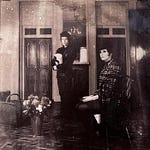
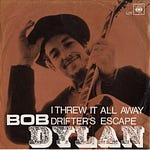
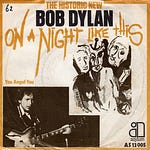

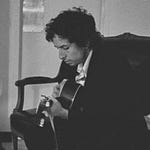
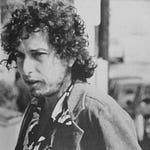
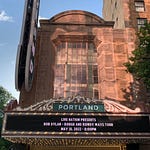
Share this post